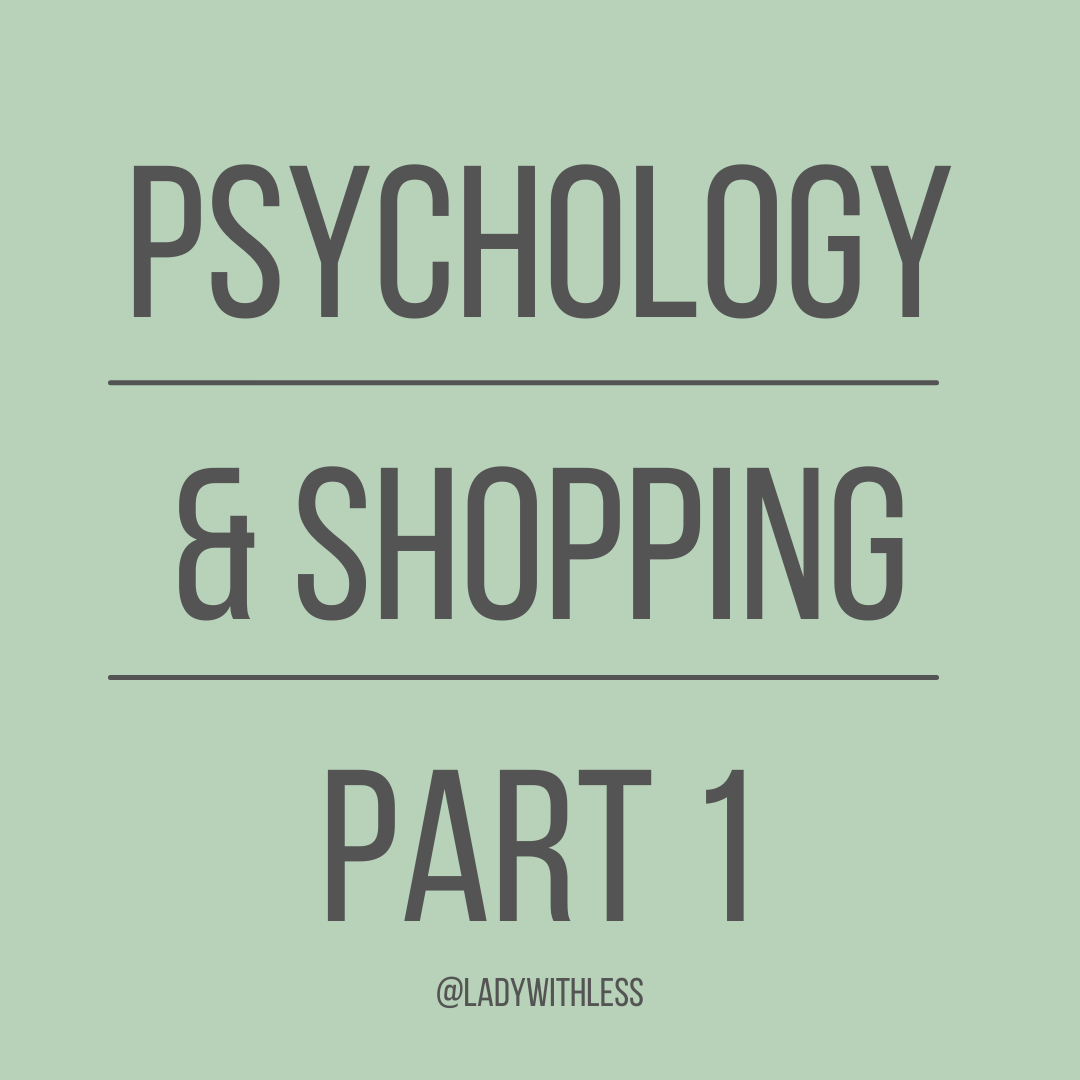A few disclaimers before we begin:
1) These are theories that were first published in the 50s & 60s in the USA. They have been retested with different variables and have had similar outcomes – which is the standard for a theory to still be seen as, uh, legit.
2) With any theory in the social sciences, there are limits to how many experiences will align entirely with the theory. Your experiences, beliefs, perspectives, culture, mood, and more can impact how you will respond to a given situation.
3) How you feel the theory applies to you may change over time, and may change from one context to the next. I’m going to be applying the theory strictly in the context of shopping, though I encourage you to think about it in other areas of your life as well.
So, What is Locus of Control?
There are two ends to a spectrum that are labeled “internal” and “external,” and in general, a person’s perspective will fall somewhere within the line – or at an extreme – of what they believe controls their outcomes. Someone who is more toward “external” sees outcomes and consequences as being left to fate or luck, and may be less inclined to try to take control of a situation if they feel that there’s nothing to do about it. For someone who is more toward “internal,” they see outcomes and consequences as mostly in their power, and will see the results as a direct consequence of the choice they made.

And Attribution Theory?
Frequently in psychology, behaviours are placed along two spectra, which offers a lot of variety for where someone can land. Later theorists have looked at what influences someone’s response to a situation: the result is based on something internal/personality and would likely be the same across multiple situations (“dispositional”) or it differs depending on the context (“situational”).

How this Applies to Shopping
How this may apply to shopping depends on how someone can choose to react to sales, bargain finds, and more. For the sake of not complicating this, we’ll use the same situation for four different people (I’m going with 4/5 sisters from Pride and Prejudice for names – but not specific to the actual characters), and here’s the scenario: there’s a seasonal sale at the local mall, which includes stores that our four examples would regularly shop at, as well as stores they usually don’t care about. Our first person, Jane, is drawn in to the stores where she usually shops, makes purchases for items that she would usually buy, and because it’s sale season, has a look at other stores just in case there’s anything else on her list that she can take care of (internal, situational). Jane may stay on budget, but this will depend on what else she finds for her list. Lizzy, on the other hand, goes into the mall with her wish list items that she planned for, and doesn’t bother checking other stores since she knows she doesn’t need anything they sell (internal, dispositional). Lizzy will come in on budget or below, depending on if anything from her wish list is no longer available. Next, we have Mary, who happened to be at the mall the weekend of the sale – as luck would have it – and will spend the day going from store to store (in order of preference) just to see what she can find (external, dispositional). Mary’s budget may have been forgotten in taking advantage of scooping up great finds. Finally, Kitty’s rainboots have splashed their last puddle, and it just so happens that the shoe store has rainboots on clearance as winter is on its way. Kitty will take advantage of the sale since the stars aligned, but isn’t too worried about the rest of the sales going on – she’s got only her rainboots on her mind (external, situational). Kitty’s budget is rainboots, and rainboots alone.

How this Applies to Me
How this may apply to you will depend on which person you identify with most. If you feel like you might be more of a Jane or Mary, you may find yourself spending time and money that you might not have intended to, especially if your goal (like mine has been in the past) is to find the best possible bargains – regardless of your needing them. I think that reflecting on how you react to information related to shopping – new collection drop, limited run, flash sale, clearance, store closure – would be the best place to start. You can’t move towards making a change if you don’t know where your behaviours are coming from, you know? For myself, I feel that I’ve been in the mindset of each example person at least once – though, historically, I would have been in the middle between a Jane and Mary, and now I’m closer to a Lizzy since leading up to my No Buy year. I feel like I’m more in control to say “no,” to the things I don’t need so I can say “yes,” to the experiences I want. A $200 clothing haul every other month feels great in the moment, but I’m now more hyped about turning that money into seeing more of the world with clothes I already love. I’d be curious to know how others who are also doing a No Buy feel their alignment has been or currently is.
Further Reading/Reference List:
In case you’d like to dive in on the original theory, here are the two major sources I’ve scouted from:
1. Locus of control: Rotter, J. B. (1966). Generalized expectancies for internal versus external control of reinforcement. Psychological monographs: General and applied, 80(1), 1.
2. Attribution theory: Heider, F. (1958). The Psychology of Interpersonal Relations. New York: Wiley.
